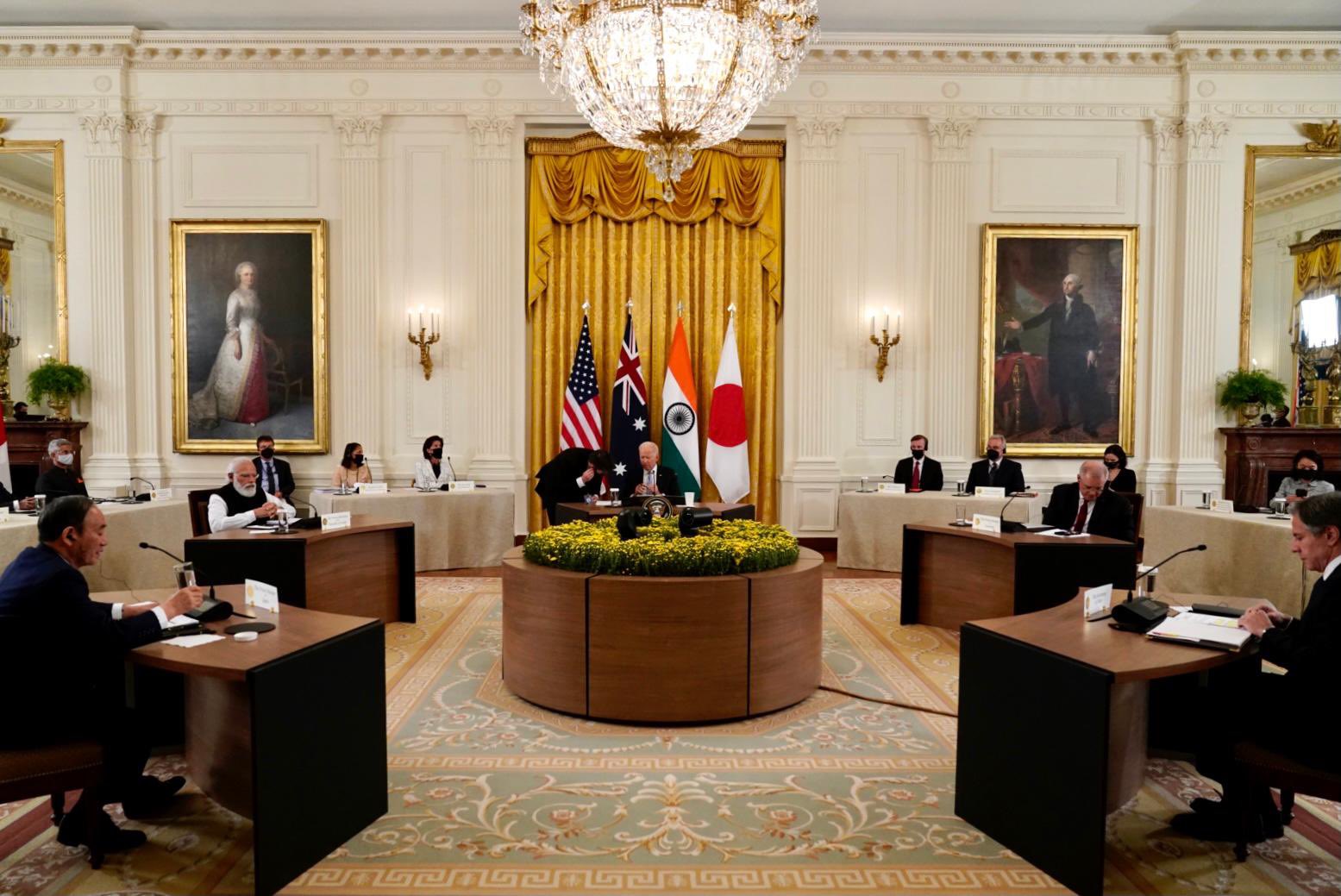As PM Narendra Modi attends the QUAD Summit in Washington DC with US President Joe Biden and Japanese and Australian Prime Ministers Yoshihide Suga and Scott Morrison respectively, the Indo-Pacific region becomes the epicenter of challenging an assertive China.
China’s ‘Most Capable’ Strike Fighter Jet Gets Deadlier With Twin EW Pods Capable Of Jamming Enemy Radars, AWACS
The US and the UK have agreed to supply Australia with nuclear-powered submarines to challenge the People’s Liberation Army Navy (PLAN). This is where the UK’s efforts to revive its imperial status and enhance its nuclear warhead stockpile, as per the Integrated Review document, comes into perspective.
With the Indo-Pacific becoming the focus area of these five nations (the US, India, Japan, Australia, and the UK) – regardless of the severe contradictions of the QUAD grouping and the futility of the exclusively naval nature against India’s Himalayan war with China – the Diego Garcia atoll has again come into prominence.

Sitting in the middle of the Indian Ocean 1,770 km east of the main island of Seychelles, the atoll is the largest and most southerly of the Chagos Archipelago. It is also known as the British Indian Ocean Territory (BIOT).
Key American Military Base
Used by the US Navy and US Air Force since the 1970s, Diego Garcia has been controversial in that it allegedly was depopulated by the UK and the US of the native Chagossians.
The infamous expulsion between 1968 and 1971 has greatly damaged the island’s reputation, with many activists seeing a revival of the UK’s dark colonial ambitions.
Japan’s 6th-Gen Fighter Jet: After US’ Lockheed & Northrop, Tokyo Now Looks To Join UK-Led Tempest Program
It was acquired by the US in an agreement in December 1966 with the UK where BIOT would be used by the US for defense purposes for 50 years, which ended in December 2016. It was extended for another 20 years to 2036.
Besides being a black site of the CIA for interrogating prisoners, the airbase there has a large US bomber and transport fleet. These are the B-1B Lancer aircraft, C-17 Globemaster III used for strategic airlifts, C-5 Galaxy, B-52, and B-2 Spirit stealth bombers.
It was used for bombing Afghanistan in the days of the ‘War on Terror’ in 2001.
However, with the US-China tussle heating up, the UK has announced it would return to Diego Garcia. Admiral Tony Radakin, First Sea Lord, said in an interview that Diego Garcia is crucial for an increased engagement in the Indo-Pacific.
“When I look at it through a Navy lens, we want to have the ships that are operating much more strongly with Oman, with India, using Diego Garcia and operating down the east coast of Africa.”
UK’s Return To Diego Garcia?
Last year, the British government announced $32.8 million to upgrade and triple the size of the British logistics hub at Duqm in Oman, and “help facilitate Royal Navy deployments to the Indian Ocean.” Thus it would be interesting to see how the UK’s return to Diego Garcia ties in with the expansion of the Duqm base.
Experts too say that the base becomes vital if one wishes to target Chinese trade and shipping, a major proportion of which are energy and crude oil supplies, over 50% of which still transit through the sea. The Malacca Strait has been looked at by India and the US to choke Chinese shipping.
European F-35s: Will Meteor & Spear Missiles Make UK, Italy’s F-35 Stealth Jets Superior To The Americans’?
It is a different matter that to reduce this very dependence on Sea Lines of Communications (SLOC) and prevent its trade from being molested by India and the US that China is pushing the Belt and Road Initiative (BRI).
The BRI envisages building massive overland trade routes from Africa, West Asia, Europe, and Asia to geo-economically unite the Eurasian region.
In May this year, the Royal Navy’s aircraft carrier HMS Queen Elizabeth and a Carrier Strike Group started its seven-month deployment, marking its Indo-Pacific tilt.
Then on September 6, two River-class Offshore Patrol Vessels HMS Tamar and HMS Spey set off on a five-year mission. But it also marks a major contradiction in the UK’s effort to revive its declining image, where after Brexit, it finds itself in a precarious financial situation and like Germany and France, is not entirely on board with the US’s geopolitical rivalries.
Both German Chancellor Angela Merkel and French President Emmanuel Macron have repeatedly called for “balance” and “independence” in their ties with China, saying challenging Beijing did not mean it should be “anti-China.”
US Air Force Confirms It’s Bringing World’s First Stealth Fighter Aircraft ‘Back In Action’
Great Britain too seemed to have had this realization when on July 1 this year when Chancellor of the Exchequer Rishi Sunak called for a “mature and balanced relationship” with China. This was to help British firms exploit “the potential of a fast-growing financial services market with total assets worth £40 trillion ($55 trillion).”
Lastly, it also assumes China would challenge India or the Quad in the Indo-Pacific, where it has a clear ‘away disadvantage’. Its modest presence in the IOR gives it limited Anti-Submarine Warfare (ASW) and air defense capability, and cannot spare more than 2-3 ships at a time. It is therefore unlikely to do anything that would irk the Quad nations.
- Parth Satam is a Mumbai-based journalist who has been covering India’s defense sector for more than a decade. He maintains a keen interest in defense, aerospace and foreign affairs and can be reached at satamp@gmail.com
- Follow EurAsian Times on Google News